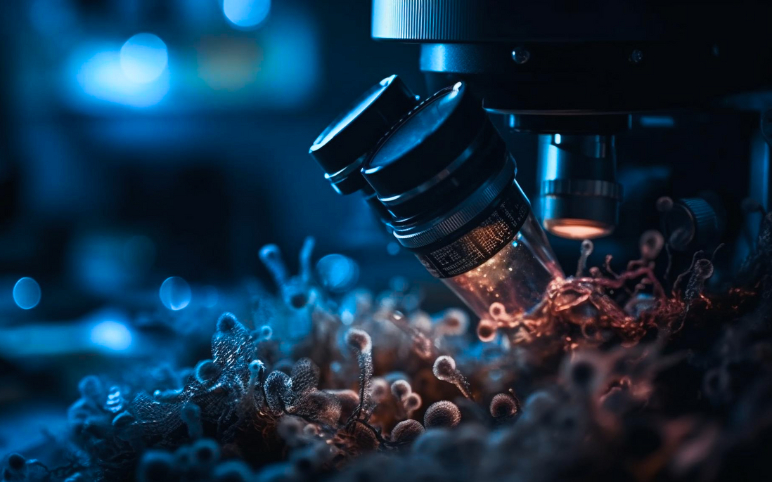The SIBIONICS GS1 CGM offers users 14 days of calibration-free continuous glucose monitoring solution, empowering patients with the capability to transmit glucose data to their monitoring devices or mobile applications and generate professional AGP reports.
To assist users in better diabetes management, the GS1 CGM also facilitates data sharing with friends and family while seamlessly integrating the latest ProView remote access platform. This equips healthcare providers with the ability to monitor remotely and deliver timely medical interventions as needed.
SIBIONICS GS1 CGM products will gradually become available for pre-sales in EU countries, the UK, and other European countries.
As per DelveInsight’s “Blood Glucose Monitoring Systems Market” report, the global blood glucose monitoring systems market was valued at USD 13.06 billion in 2022, growing at a CAGR of 7.72% during the forecast period from 2023 to 2028, to reach USD 20.40 billion by 2028. The escalating demand for blood glucose monitoring systems is predominantly attributed to the increasing prevalence of diabetes among the population across the globe and the growing burden of the geriatric population who are susceptible to developing hyperglycemia. In addition, the spike in technologically advanced blood glucose monitoring devices product launch and government initiatives to raise awareness regarding proper diabetes management, among others, are the factors likely to spur the global blood glucose monitoring systems market.
Abbott Received FDA Approval for HPV Test to Run on Alinity m
On November 02, 2023, Abbott, the global healthcare leader that helps people live more fully at all stages of life, received the U.S. Food and Drug Administration (FDA) approval for its molecular human papillomavirus or HPV screening solution, adding a powerful cancer screening tool for detecting high-risk HPV infections to the Alinity m family of diagnostic assays.
In accordance with established medical guidelines, the Alinity m high risk (HR) HPV assay is authorized for use as a test for HPV identification and routine cervical cancer screening. For patients and doctors who would rather utilize both tests together, the assay is also authorized for use in conjunction with a Pap test; this procedure is known as co-testing.
Significantly, the Alinity m HR HPV assay provides data on five risk groups encompassing the 14 distinct genotypes of the virus that may cause cancer. This aids medical professionals in determining not only whether a patient has an HPV infection but also whether that infection is brought on by one or more of the types that may cause cancer.
The Abbott Alinity m HR HPV assay will be available for use on Abbott’s Alinity m laboratory instrument, Abbott’s most advanced molecular PCR platform which provides fast results in high volumes.
Assays available for use on the Alinity m system in the United States include SARS-CoV-2 (Emergency Use Authorization), Resp-4-Plex (Emergency Use Authorization), HCV (Hepatitis C), HBV (Hepatitis B), HIV-1 (Human Immunodeficiency Virus type 1), STI (CT/NG/TV/MG), CMV (Cytomegalovirus) and EBV (Epstein–Barr virus).
“Professional guidelines are clear in their recommendation to shift away from Pap tests in favor of clinically validated, primary HPV testing as the best way to detect the risk of cervical precancer and cancer,” said Mark H. Stoler, M.D., professor (emeritus) of pathology and clinical gynecology at the University of Virginia. Mark also added, “As more women are vaccinated against the highest-risk strains of the virus, it continues to be important to screen women for other HPV strains that have the potential to cause cancer. Extended genotyping enables us to improve risk assessment and tailor follow-up for patients so we can minimize unnecessary treatment while still guarding against cancer development.”
“HPV testing is a powerful tool for detecting HPV infections that can lead to certain cancers, including cervical cancer, and illustrates the power of molecular diagnostics in infectious disease,” said Keith Cienkus, vice president of Abbott’s molecular business. Cienkus further added by saying, “The Alinity m HR HPV assay was carefully designed to support patient care and streamline HPV testing.”
According to DelveInsight’s “Companion Diagnostics Market” report, the global companion diagnostics market was valued at USD 5.91 billion in 2022, growing at a CAGR of 12.32% during the forecast period from 2023 to 2028, to reach USD 11.89 billion by 2028. The increase in the market for companion diagnostics is predominantly owing to an exponential rise in cancer cases across the globe. Additionally, the rise in awareness regarding precision medicine among the patient population as well as the growing focus of the manufacturers concerning the development of precision medicine has bolstered the demand for companion diagnostics. Furthermore, an increase in research and developmental activities for developing companion diagnostics for non-cancer disorders and growing approvals and launches of various companion diagnostic products in the market, among others, are some of the key factors anticipated to augment the global market for companion diagnostics during the forecast period (2023-2028).
CleanNA Launched Its First CE-IVD Molecular Diagnostics Product
On November 06, 2023, CleanNA, a Dutch manufacturer of magnetic bead-based nucleic acid extraction kits, launched its first CE-IVD-marked product.
The ‘Clean Cell-Free DNA Kit’ helps to isolate cell-free DNA from human plasma in three straightforward steps: bind, wash, and elute. With its magnetic bead technology and CE-IVD mark, the kit is ideal for automation and use in diagnostic procedures.
The Clean Cell-Free DNA Kit can be used for prenatal screening, oncology, transplant medicine, and cardiovascular disease screening. The diagnostic tool is minimally invasive for the patient because only a blood sample is necessary.
“The launch of the Clean Cell-Free DNA Kit, our first CE-IVD product, marks a milestone for our company. Our hard work has led us to this moment, and we are fully prepared to position CleanNA within the molecular diagnostics market”, said Glenn Nohar, owner and CEO of CleanNA.
According to DelveInsight’s “In-Vitro Diagnostics Market” report, the global in vitro diagnostics market was valued at USD 71.01 billion in 2022, growing at a CAGR of 4.71% during the forecast period from 2023 to 2028, to reach USD 93.60 billion by 2028. The in vitro diagnostics market is estimated to register positive revenue growth owing to factors such as the rising prevalence of various infectious diseases such as COVID-19, the growing prevalence of various cancers, increasing cases of hematological diseases, and increasing product development activities concerning in vitro diagnostics among others.
Orthofix Launched the WaveForm L Interbody System for Lateral Lumbar Fusion Procedure
On November 06, 2023, Orthofix Medical Inc., a leading global spine and orthopedics company, announced the full US commercial launch of the WaveForm® L Lateral Lumbar Interbody System.
Designed for lateral lumbar interbody fusion (LLIF) procedures, the 3D-printed WaveForm L features a porous structure that prioritizes strength and stability to provide a robust fusion environment. Structure, surface, and stability are the main considerations in the creation of WaveForm interbodies.
WaveForm L is made of a repeating wave-like structure that is intended to distribute compressive stresses well and offer high porosity for optimal stiffness without sacrificing strength. While the optimized 65 percent endplate porosity of the wave-like structure allows for bony ingrowth and early mechanical stability, WaveForm L’s 80 percent body porosity offers improved imaging properties and greater graft packability.
“Designed to treat the spine safely and reproducibly through indirect decompression and sagittal alignment restoration, the WaveForm L features a large core aperture for the placement of bone graft material to optimize bony fusion throughout the interbody,” said Dr. Donald Blaskiewicz, Director of Spinal Deformity at St. Luke’s Boise Medical Center in Boise, Idaho, and faculty at UCSD in San Diego, CA. Dr. Donald also added, “The WaveForm L also has improved imaging characteristics to aid in radiographic visualization during intraoperative and postoperative imaging. These combined features make it one of the best 3D-printed interbodies available.”
“We are dedicated to providing a comprehensive portfolio of innovative, procedurally-focused products strategically designed to work together to drive fusion,” said Kevin Kenny, President of Orthofix Global Spine. Kenny further said, “WaveForm L represents the latest advancements in proprietary spinal implant technology engineered to address the many nuances of spinal pathology to meet individual patient needs, delivering both clinical and economic value to patients, surgeons, and hospital systems.”
According to DelveInsight’s “Interbody Cages Market” report, the global interbody cages market is estimated to grow at a CAGR of 4.72% during the forecast period from 2023 to 2028. The demand for interbody cages is primarily being boosted by the increasing number of spinal disorders such as degenerative disc degeneration (DDD), spinal fusion, spinal injuries, and others. Further, the rising adoption of advanced and innovative technologies, the increasing demand for minimally invasive surgeries, the rising cases of accidents, and the increasing product launches & approval among others are thereby contributing to the overall growth of the interbody cages market during the forecast period from 2023-2028.
Alucent Biomedical Received Regulatory Approval for the Second US Clinical Study
On November 07, 2023, Alucent Biomedical Inc. a privately held company dedicated to developing and commercializing its revolutionary AlucentNVS technology for the treatment of patients requiring life-saving vascular procedures, announced that the U.S. Food & Drug Administration (FDA) granted an Investigational Device Exemption (IDE) for the US clinical study of its AlucentNVS technology for promoting the maturation of arteriovenous fistulas (AVF) in patients requiring hemodialysis.
The milestone follows Alucent’s first IDE approval from the FDA, which was granted in August 2023.
AlucentNVS combines an intravascular device with a photochemical process to link structural proteins in the wall of a blood vessel to control vascular remodeling. The intervention is designed to promote patency of the vessel’s lumen and establish sustained improvement of blood flow. AlucentNVS is also designed to retain the natural functionality and flexibility of the vascular wall.
The company aims to improve the success rate of AV fistula maturation by utilizing its AlucentNVS technology in the surgical AVF creation procedure. This procedure is the gold standard for hemodialysis access for most patients; however, as many as 30-60% of AVFs fail to mature into conduits capable of supporting dialysis.
The Activate AVF feasibility trial is already underway and enrolling patients at sites in Australia and Poland.
“This second IDE approval by the FDA will allow us to advance our goal to offer physicians and patients a more successful approach to initiating hemodialysis through an AVF in patients with kidney failure, a life-saving procedure where failure rates are still unacceptably high,” said Dr. Myles Greenberg, CEO of Alucent Biomedical. Dr. Myles further said, “We believe our technology has the potential to transform the current standard of care for patients requiring dialysis.”
According to DelveInsight’s “Vascular Access Device Market” report, the global vascular access device market was valued at USD 4.59 billion in 2022, growing at a CAGR of 6.64% during the forecast period from 2023 to 2028, to reach USD 6.75 billion by 2028. The demand for vascular access devices is primarily motivated by the growing prevalence of chronic diseases like cancer, kidney failure, and heart diseases that require the use of these devices. Some other factors like the rise in the number of chemotherapies, lifestyle diseases, and their rising occurrence in pediatric patients may drive the growth of the market.
Surmodics Released TRANSCEND Trial 36-Month Data
On November 07, 2023, Surmodics, Inc., a leading provider of medical devices and in vitro diagnostic technologies to the healthcare industry, released the 36-month data for its TRANSCEND clinical trial.
The TRANSCEND trial randomized 446 patients at 65 global sites to assess the safety and efficacy of the SurVeil™ drug-coated balloon (DCB) versus the IN.PACT® Admiral® DCB for treatment of superficial femoral and proximal popliteal artery lesions. The primary efficacy endpoint is 12-month primary patency, defined as freedom from binary restenosis or clinically driven target lesion revascularization (CD-TLR). The primary safety endpoint is freedom from device or procedure-related death within 30 days and above-ankle amputation or CD-TVR within 12 months. Non-inferiority was tested using a multiple imputation approach at a one-sided alpha of 0.025. Additional acute and long-term secondary endpoint data is being assessed through 5 years of follow-up.
The 12-month and 24-month data were presented by Dr. Kenneth Rosenfield at the Leipzig Interventional Course (LINC) in 2021 and at Vascular InterVentional Advances (VIVA) 2022 respectively.
Data demonstrated that the SurVeil DCB is non-inferior to the IN.PACT Admiral DCB with regards to both safety and efficacy, while delivering a substantially lower drug dose. Both the SurVeil and IN.PACT Admiral DCBs utilize coatings with the anti-proliferative drug paclitaxel. However, the IN.PACT Admiral DCB has a 75% higher drug load of paclitaxel (3.5 μg/mm2) than the SurVeil DCB, which has a 2.0 μg/mm² drug load.
According to DelveInsight’s “Drug-Eluting Stents Market” report, the global drug-eluting stents market was valued at USD 2.57 billion in 2022, growing at a CAGR of 8.09% during the forecast period from 2023 to 2028 to reach USD 4.08 billion by 2028. The drug-eluting stents market is slated to witness prosperity owing to factors such as the growing prevalence of cardiovascular diseases which can further be attributed to the increase in the geriatric population wherein aging is considered to have a deleterious effect on blood vessels, growing prevalence of lifestyle disorders such as hypertension, diabetes, and obesity that are linked to affect the health of blood vessels in long term and drastically increase the probability of atherosclerosis occurrence, and the growing focus on developing a newer generation of drug-eluting stents to minimize post-procedural complications are further expected to result in the appreciable revenue growth in the drug-eluting stents market during the forecast period (2023-2028).



